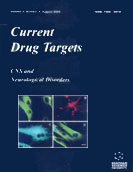Abstract
Due to the presence of the blood-brain barrier, the central nervous system (CNS) is not easily accessible to systemically delivered macromolecules with therapeutic activity such as growth factors, cytokines or enzymes. Therefore, the expression of exogenously administered genes in the brain has been proposed for a wide variety of inherited and acquired diseases of the CNS, for which classical pharmacotherapy is unavailable or not easily applicable. Gene therapy to the CNS has been the target of a great number of studies aiming at finding a viable therapeutic strategy for the treatment of neurological disorders. This approach has already been used as a promising tool for brain protection and repair from neuronal insults and degeneration in several animal models, and is currently being applied in clinical trials. The choice of an appropriate vector system for transferring the desired gene into the affected brain area is an important issue for developing a safe and efficient gene therapy approach for the CNS. In this review, we focus on the various types of vectors that have been used for gene delivery into the CNS. Particular emphasis is given to their mode of preparation, biological activity, safety and in vivo behavior. Examples illustrating the potential of both viral and non-viral vectors in therapeutic applications to brain disorders are provided. In addition, the use of lentiviral vectors for in vivo modeling of genetic disorders of the CNS is discussed.
Keywords: gene therapy, gene delivery, non-viral vectors, liposomes, viral vectors, lentivirus, cns, brain
 4
4

















